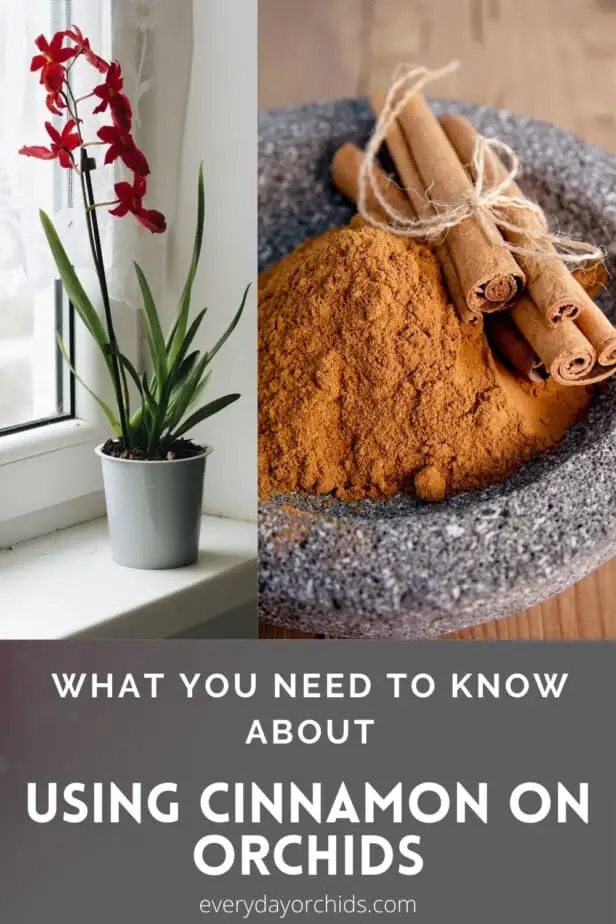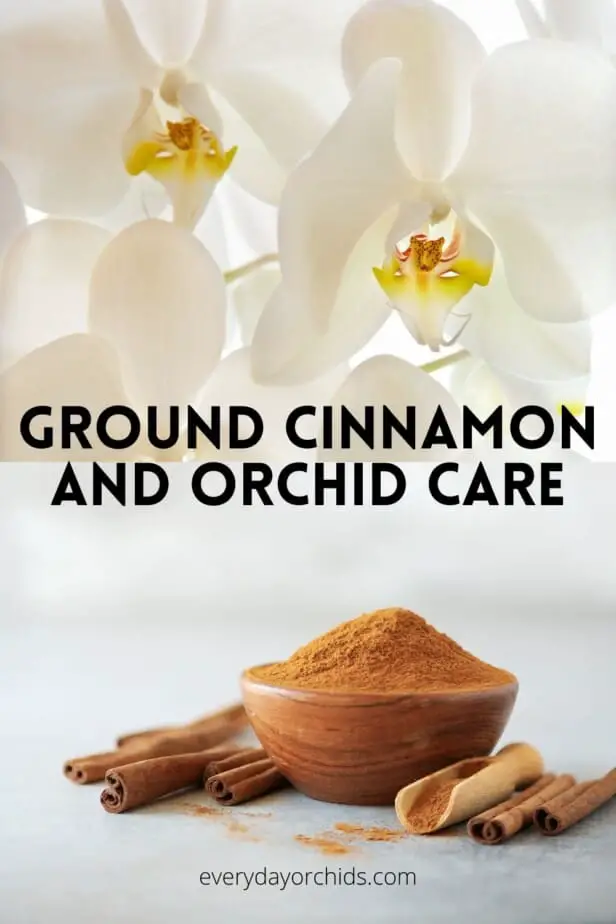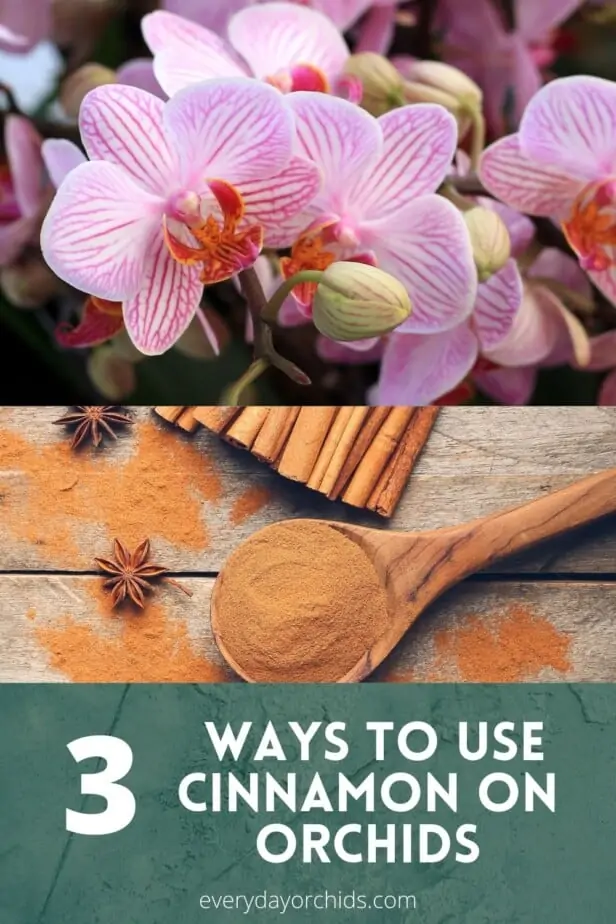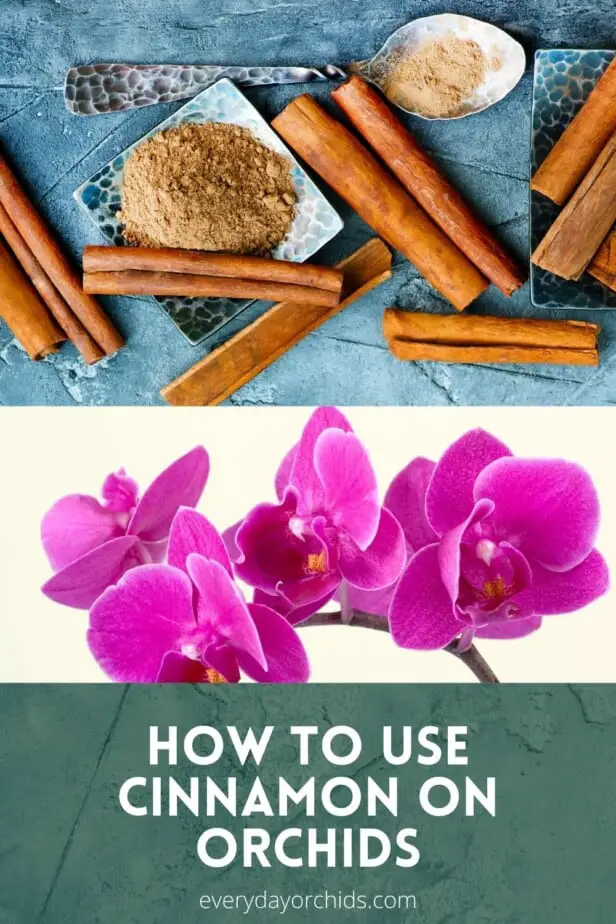If you’ve read my blog for any length of time, you know I’m a fan of using ground cinnamon on my orchids. I’ve done this for years to seal off cut areas of my orchid. I’ve also used ground cinnamon powder as an anti-fungal agent and to treat crown rot.
However, if you are new to orchid growing, this may sound like a foreign concept to you. After all, ground cinnamon is for baking and cooking, right? Well yes, but many orchid growers also use ground cinnamon as a regular part of orchid care.
Ground cinnamon powder is integral in orchid care as an anti-fungal measure as well as a desiccant, to seal and protect cut orchid ends. Cinnamon can also be used to treat certain types of rot and orchid diseases, such as crown rot. It is readily available and inexpensive, making it easy to add to your stash of orchid care supplies.
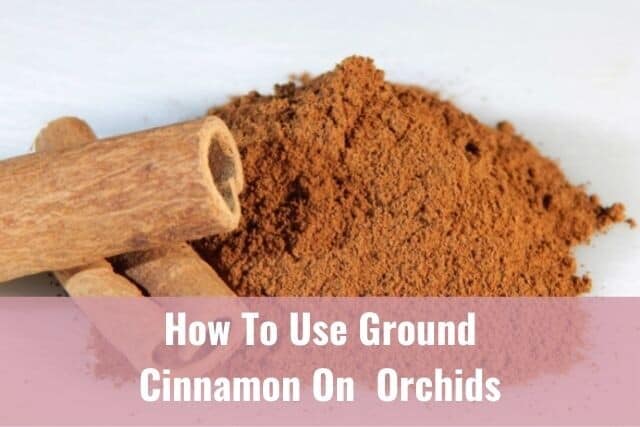
If you aren’t familiar with how to use this baking ingredient on your orchid, keep reading to learn more. I’ll explain more about how to use ground cinnamon on your orchids, as well as the benefits of doing so.
Please note that these links are affiliate links and as an Amazon Associate, I earn from qualifying purchases. Purchases made through affiliate links in this post may generate commissions at no additional cost to you. Use this link for a discounted Amazon Prime trial. Thank you for your support!
Table of Contents
How Do You Use Ground Cinnamon On Your Orchid?
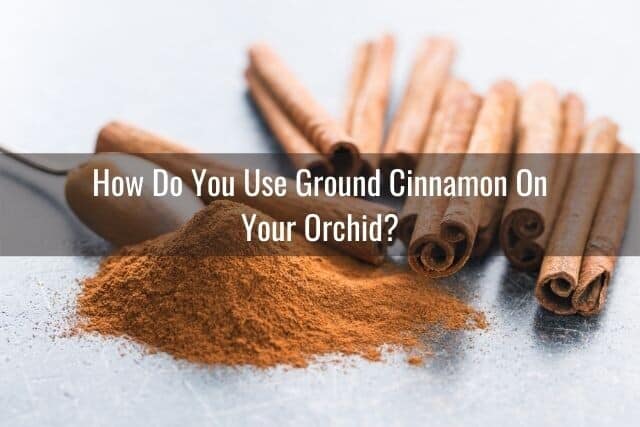
How you use ground cinnamon on your orchid will depend on the situation. Ground cinnamon serves more than one purpose. There are three scenarios in which you would want to use ground cinnamon on your orchid. I’ll go over each one below.
To Seal Off Cut Ends
Ground cinnamon powder is a desiccant. In other words, it has drying properties. It can be used after pruning your orchid to seal off any open, cut areas on your orchid stem or leaves.
Just dab a small amount of ground cinnamon powder on the cut ends using a clean fingertip. This will help close up the “wound” and create a callous. Doing this will prevent bacteria and other pathogens from entering the orchid and causing an infection.
If you prefer not to use your finger to apply the cinnamon, you can also dip the cut areas in cinnamon powder. In either case, the cut areas will need to be slightly moist so that the cinnamon will stick. The drying action of the ground cinnamon will create a “scab” over the pruned area.
A third way to seal off cut orchid ends is to create a paste using ground cinnamon powder and Elmer’s glue. Mix a drop of glue and ground cinnamon together in a small bowl to form a thick paste.
If you don’t have Elmer’s glue, you can also use a small amount of cooking oil to achieve a similar effect. Once you have your thick paste of cinnamon powder, apply it to the cut orchid end. As the glue dries, it will create a waterproof seal over the wound, keeping bacteria and germs out.
As A Fungicide
Ground cinnamon powder acts as a natural fungicide, or anti-fungal, agent. You can use it to treat crown rot, which I’ll go over in the next section below.
To use cinnamon powder as a general fungicide, you will first need to remove all the diseased areas on the orchid. Using sterilized scissors or gardening shears, trim off all the diseased areas plus a small portion of the healthy tissue right next to it.
Apply ground cinnamon powder to the newly cut areas. You can either dab it on the orchid as you would to seal off the cut ends or make a paste, as described above.
To Treat Crown Rot
If your orchid has crown rot, then you’ll need to treat it with hydrogen peroxide and ground cinnamon. As long as you’ve caught the crown rot early enough, you’ll be able to save your orchid.
First, treat the crown rot by pouring hydrogen peroxide into the orchid crown. I outline this method in more detail in another article, how to treat crown rot in orchids.
The bubbling and fizzing means that the hydrogen peroxide is working to treat the infection and kill the pathogens. Do this once every 2 or 3 days until it no longer bubbles and fizzes.
Once your orchid no longer needs hydrogen peroxide, you can sprinkle ground cinnamon powder into the orchid’s crown and what remains of the orchid’s main stem.
As mentioned earlier, ground cinnamon is a drying agent and an anti-fungal. Applying ground cinnamon powder here will dry out any remaining moist or rotted areas. The anti-fungal properties in ground cinnamon will also protect the remaining orchid tissue from further infection.
If you were successful in treating your orchid’s crown rot, over the next few weeks, you will start to see new root and leaf growth on your orchid.
Places To Avoid Using Ground Cinnamon
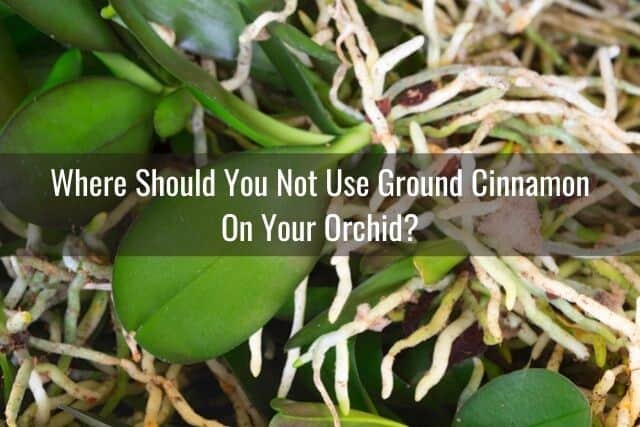
Ground cinnamon can be beneficial if used in the right places, such as on pruned flower spikes or trimmed orchid leaves. However, as a general rule, you’d want to avoid sprinkling ground cinnamon over your orchid roots.
Root Rot
If your orchid has root rot, don’t apply ground cinnamon all over the orchid roots to try and get rid of the rot. This won’t work and will only harm your orchid. Cinnamon is a desiccant. It will dry up the roots and damage the root tissue, particularly the delicate velamen.
Instead, the best thing to do for root rot is to remove the dead, rotted roots. Use sterilized scissors or gardening shears to trim off all the rotted areas. If you like, you can follow this with a small dab of ground cinnamon powder on the cut ends of the trimmed roots. This will help seal off the ends and prevent further infection.
If you are curious about orchid root care, you can learn more here:
- How to treat orchid root rot
- How to save an orchid without roots
- Caring for different types of orchid roots
- General orchid root care
Controversy: Using Ground Cinnamon On Roots
In terms of using ground cinnamon on cut orchid root ends, there is a some controversy on this topic.
Some people are opposed to using ground cinnamon anywhere near the roots. There is a feeling that the cinnamon would dry out the orchid too much. Meanwhile, others use ground cinnamon only on the cut ends of the roots and feel this is fine.
Personally, I have used ground cinnamon powder on cut root ends after trimming off rotted roots. I do this to give my orchid an extra layer of protection against infection. I also use it to dry up and seal off the cut ends. In my opinion, using ground cinnamon is safe, as long as you only use it on the cut ends of the roots and avoid the healthy root tissue.
If you accidentally get ground cinnamon powder on healthy orchid roots, either rinse it off or shake it off immediately. As stated earlier, ground cinnamon powder on healthy orchid roots will dry up the roots and damage the velamen.
If you choose not to dab ground cinnamon powder on the cut ends of the orchid roots, that is perfectly fine too. I have repotted orchids many times, sometimes using ground cinnamon on the cut ends of rotted roots, sometimes not. Honestly, I haven’t noticed a big difference either way, so can’t say for sure if doing so has a large benefit or not.
If you are on the fence about it, just err on the side of caution and avoid using ground cinnamon on your orchid roots.
Does Putting A Cinnamon Stick In The Orchid Potting Media Prevent Rot?
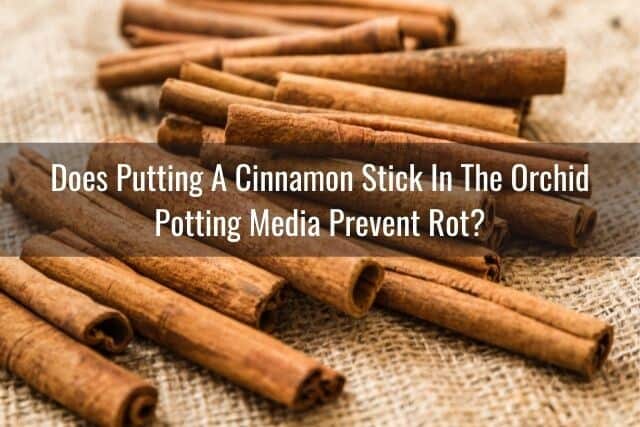
This question sometimes comes up because cinnamon has anti-fungal properties. Some people wonder if putting a cinnamon stick in the potting media would be a good preventative measure for keeping root rot away.
The answer is no, you should not put a cinnamon stick or ground cinnamon in the potting media. If you are thinking of doing this because of rotted roots or fungus gnats or some other problem in the potting media, don’t. It won’t prevent rot and will likely cause more issues.
Fungus gnats or root rot is a sign of a bigger problem. Usually improper watering practices is the culprit.
Instead of using ground cinnamon or a cinnamon stick to address the problem, do these things instead. Change the potting media and use fresh media to repot your orchid. Clean the orchid roots under gently running water. Trim off any rotted roots using sterilized gardening shears.
Moving forward, make sure you avoid overwatering your orchid. Check out this resource on how to water your orchid for more information. Maintain good drainage and air circulation around the orchid roots to prevent root rot, mold and other issues from coming up again.
If You Don’t Use Cinnamon On Your Orchid, Will It Be More Likely To Get Infected?
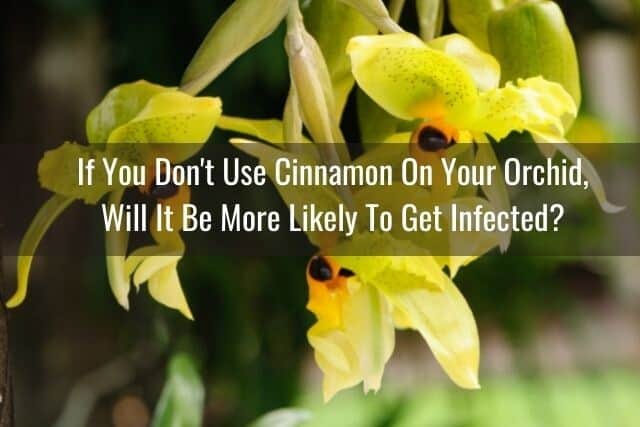
To be honest, no. Chances are high that your orchid will be fine without cinnamon powder.
Think of it this way, orchids in the wild have survived for centuries without the help of cinnamon powder. They may have leaves or roots break off and end up with open “wounds.” There is no one in the jungle waiting with cinnamon powder to seal up the cut ends of wild orchids.
That said, you don’t have to use cinnamon powder on your orchid, but you can. I like to use ground cinnamon powder on cut ends and as an anti-fungal because I’ve found it effective for these purposes.
However, please know that the cut end of the orchid will eventually dry up on its own and scab over, even without any intervention on your part. Applying ground cinnamon just speeds up the process and adds an extra layer of anti-fungal protection.
Final Thoughts
Using ground cinnamon powder on your orchids is a personal decision and one you can easily incorporate into your orchid care practices, should you choose to do so.
The only time I would say using cinnamon powder on orchids is a “must” is when you are treating crown rot. In all other instances, such as using cinnamon powder to seal off cut ends and as a general anti-fungal treatment, it is helpful, but not absolutely necessary. If you do choose to use ground cinnamon powder as part of your orchid care, I hope the information I’ve provided has helped.
If you enjoyed this article, please pin it and share!
